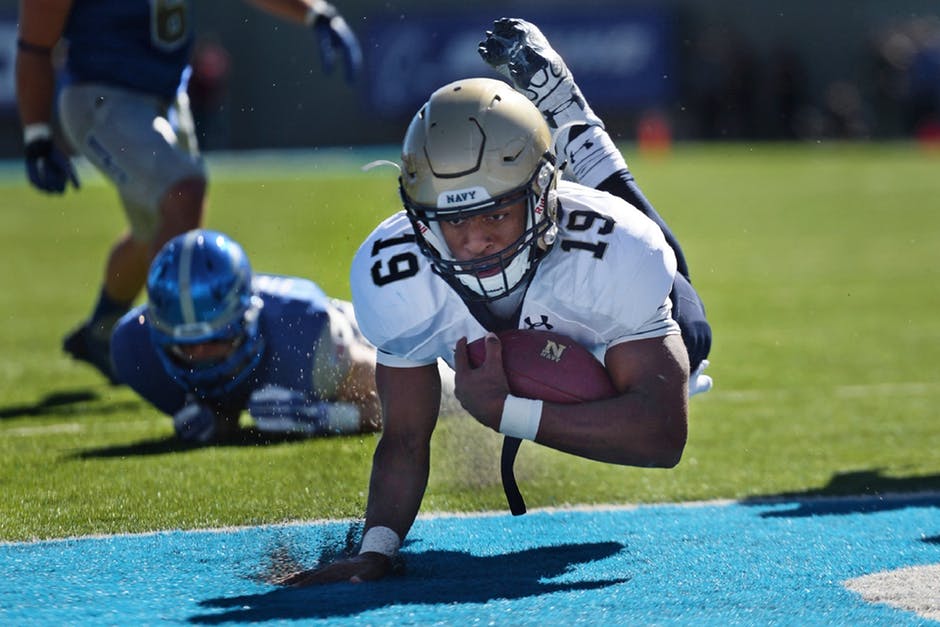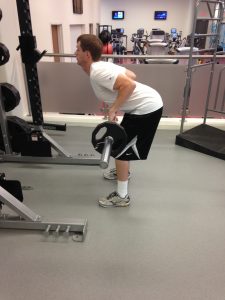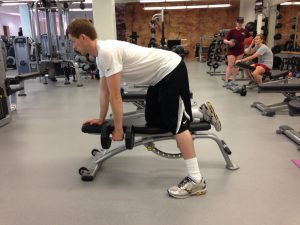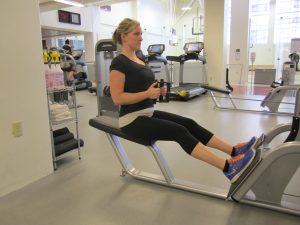We spend a lot of time focusing on pressing with the strength training for athletes. The bench press is the king of pressing exercises, closely followed by the military press. Now, while it is true that we’ll never perform sports while lying on our backs and pushing something away from us, these are still important exercises because they help to strengthen the upper body and to ensure that this is not a week link in our athlete’s performance.
Having said that, we can overemphasize the presses with the strength and conditioning of athletes. This can help to lead to shoulder issues over time. To balance this out, I like to make sure that athletes spend time performing rows – especially the bent over row.
To me the bent over row is to the upper back what the bench press is to the chest. It’s a fundamental exercise that works the shoulders, upper back, biceps, and forearms. It is also performed standing up and it requires a strong core.
Begin this exercise with the bar on the floor. Approach the bar and make sure that your feet are hip-width apart. Taking a clean-width grip on the bar, with your palms facing you, stand up with the bar in your hands.
From here, pull your shoulders back and stick out your chest. This position needs to be maintained throughout the exercise. Unlock the knees, push the hips back, and allow the bar to slide down the thighs. The goal is to have the upper body close to parallel to the ground.
Without swinging the upper body, pull the bar towards the abdominals. Lower and repeat for the desired number of repetitions.
A few things I focus on with this exercise:
- First, we want a curve in the lower back. So I will cue athletes to keep their shoulders back and chest out. If necessary I will also cue them to push their stomach towards the floor (belly towards the floor!).
- Second, I have athletes focus on their scapula during the row. As the bar is pulled towards the stomach our focus is on retracting the scapula (bring your shoulder blades together), as we lower the bar the focus is on protracting the scapula.
This exercise can be done with dumbbells and kettlebells as well. With either of these, the technique is similar it’s just that we’re holding different implements in our hands.
I like to program it in a similar manner to the bench press though I don’t take max numbers on the exercise. For example, if we’re doing sets of 4-6 reps at 85% on bench press then we’d do sets of 4-6 reps on the bent-over row (i.e. pick as much weight as you can correctly handle for sets of 4-6 reps).
Now, with athletes the focus has to be on exercises that give you a large return for the time invested because there aren’t enough hours in the day for training. This is why exercises like the seated row and the one-arm dumbbell row aren’t being discussed in this post. In addition, there are a number of specialized rowing pieces of equipment – but this requires a space and equipment investment and only allows for one athlete to rain. They are all fine exercises for the upper back, but they don’t have the kind of return that the bent over row does. The bent over row allows you to use a platform or free space, uses a barbell, dumbbell, or kettlebell, and is conducive to a large group of athletes training together.




